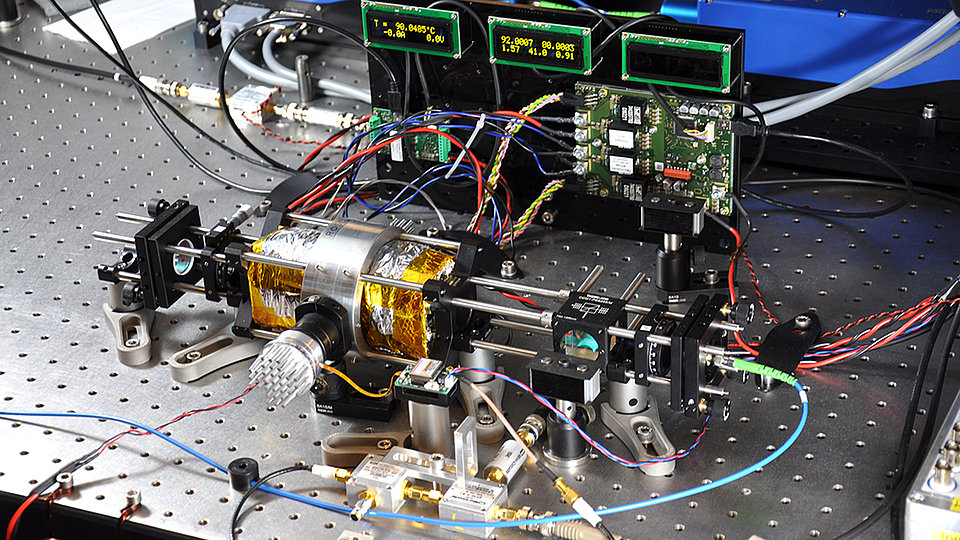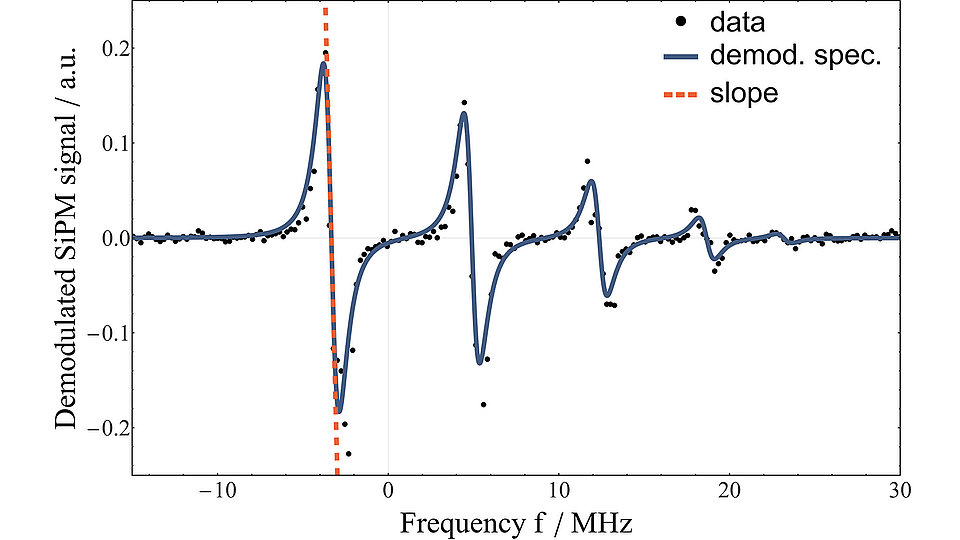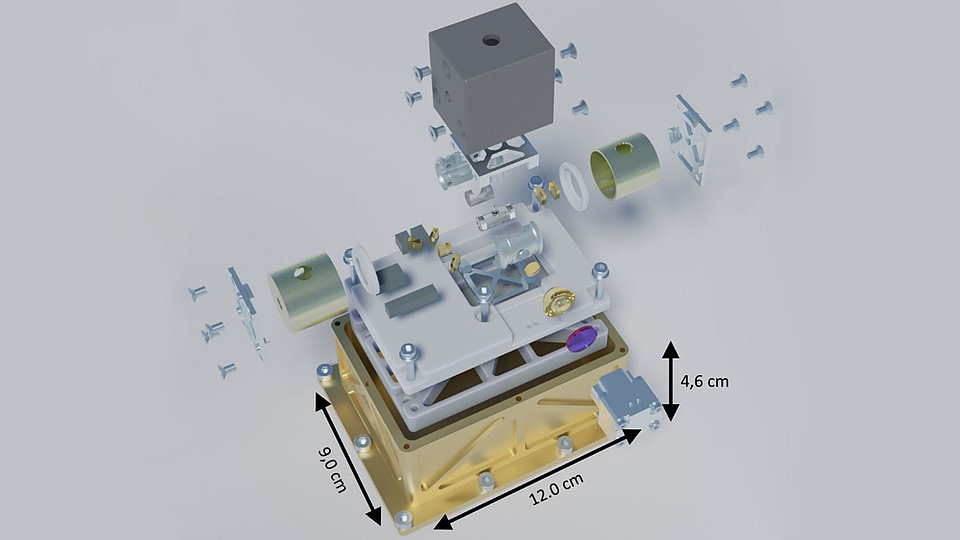Miniaturized space-borne rubidium two-photon optical frequency references for optical atomic clocks
Fig. 2: Frequency modulation spectroscopy of the 5D5/2 transition in 85Rb used to discipline the laser source onto the reference.
Optical frequency references (OFR) are promising candidates for space-borne time keeping used, for example, in global navigation satellite systems such as GPS or deep space navigation. To be utilized in space, size, weight and power budgets (SWaP) are challenging parameters that have to be met while maintaining outstanding frequency stability. CRONOS (Compact Rubidium Oscillator for Navigation systems Onboard a Satellite) is a project in collaboration with the HU Berlin, TU Berlin and Menlo Systems GmbH, aiming to develop such a space-borne optical atomic clock for operation on compact satellites.
Last year, FBH demonstrated an autonomously operating frequency reference based on the D2 line of rubidium, reaching a fractional short-term instability of 1.4 x 10-12 within a volume of just around 400 ml [1, 2, 3]. The CRONOS project aims to utilize the developed technology to build a reference based on the 5S-5D two-photon transition in rubidium. As shown in Fig. 1, laboratory setups were developed as demonstrators for testing and can be disciplined onto the rubidium atom using frequency modulation spectroscopy (see Fig. 2). Performance values are already competing with state-of-the-art experiments, providing short-term instabilities of 1.5 x 10-13 with further predicted improvements in the future.
Recently, we have begun to miniaturize these laboratory frequency reference setups, targeting an assembly with a SWaP budget of a few litres of volume, a mass below 2 kg, and around 10 W electrical power consumption. This requires new extended cavity diode lasers (ECDL) to be fit alongside the reference, whereas Menlo Systems supplies the frequency comb. All systems together will provide a turn-key optical clock system to be put on a satellite bus designed by the TU Berlin.
To fulfil the high shielding requirements of the reference against outside influences and fields, an elaborate assembly is required. It is designed to be fit within a titanium housing as a self-contained device, as shown in Fig. 3. The architecture includes magnetic shields, multiple thermal zones providing 92 °C for the rubidium vapor cell with a precision of less than 1 mK below 1000 s, single photon detectors with computer optimized collection optics, micro integrated components for guiding and coupling the laser beam, and other detection devices as well as electronics necessary for the stabilization and detection operations. First tests of this reference have begun and are planned to terminate in the middle of 2023 with an intermediate milestone of showing a target fractional instability of below 1 x 10-12 at one second, a value that improves at longer averaging times.
This work is carried out in a collaboration between Ferdinand-Braun-Institut, Humboldt-Universität zu Berlin, Technische Universität Berlin, and Menlo Systems. It is supported by the German Space Agency DLR with funds provided by the Federal Ministry of Economics and Technology (BMWi) under grant number DLR 50RK1971 and 50WM2164.
Publications
[1] A. Strangfeld, S. Kanthak, M. Schiemangk, B. Wiegand, A. Wicht, A. Ling, M. Krutzik, “A Prototype of a Compact Rubidium-Based Optical Frequency Reference for Operation on Nanosatellites” J. Opt. Soc. Am. B 38, 1885-1891 (2021).
[2] A. Strangfeld, B. Wiegand, J. Kluge, M. Schoch, M. Krutzik, “Compact plug and play optical frequency reference device based on Doppler-free spectroscopy of rubidium vapor”. Optics Express, 30(7), 12039-12047 (2022).
[3] B. Wiegand, B. Leykauf, R. Jördens, M. Krutzik, “Linien: A versatile, user-friendly, open-source FPGA-based tool for frequency stabilization and spectroscopy parameter optimization” Review of Scientific Instruments 93, 063001 (2022).


